I put Garmin’s new Forerunner 570 through its paces and this is who it’s really for
Garmin’s latest mid-range running watch gets a sleek redesign and smart upgrades

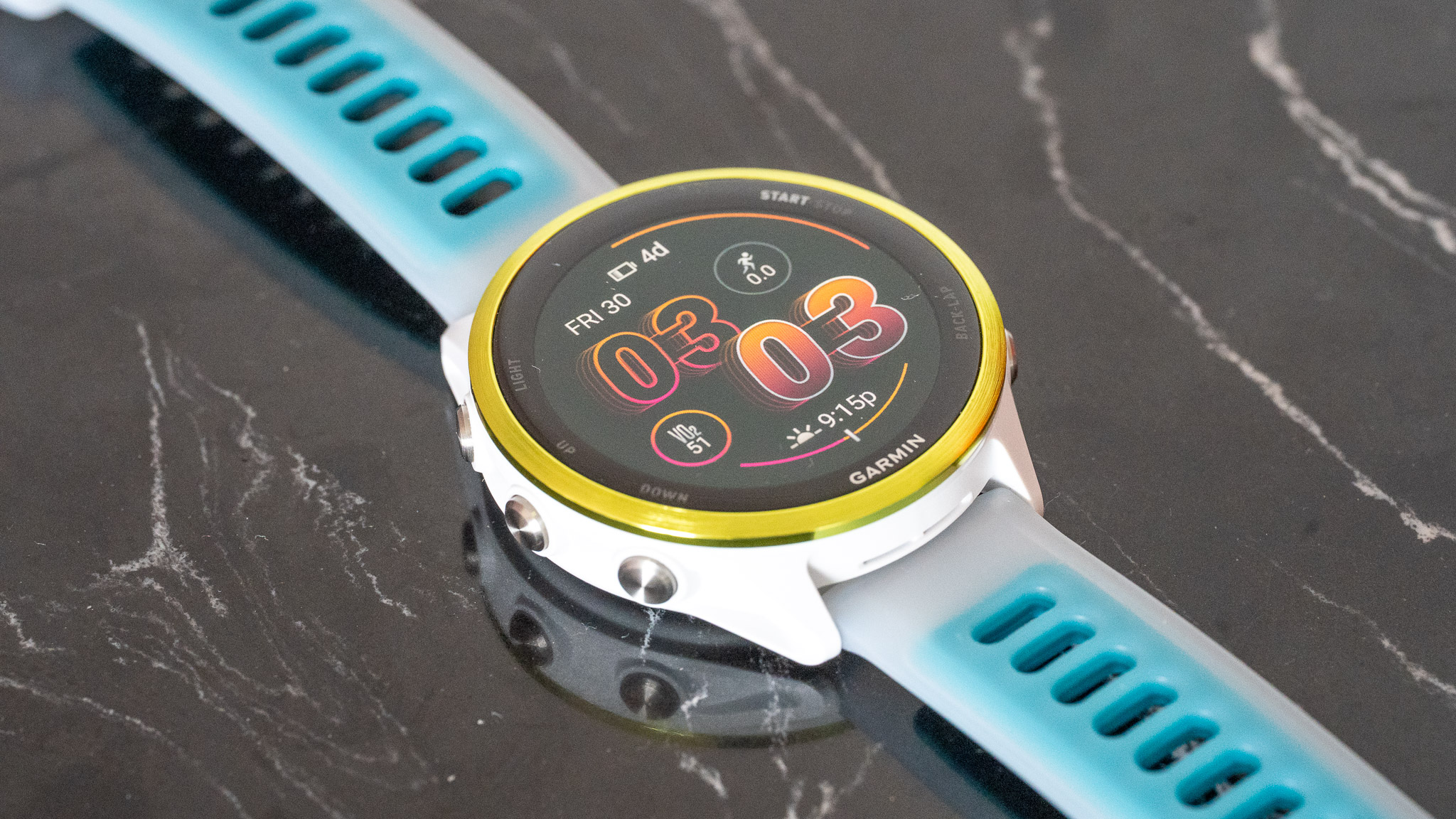
The Forerunner 570 refines Garmin’s mid-range formula with a sharper AMOLED screen, upgraded heart rate sensor, and handy additions like a mic and speaker. It’s a sleek, capable running watch with just enough upgrades to feel fresh, ideal for runners who want performance features in a more stylish package.
-
+
Crisp, bright AMOLED screen
-
+
Latest Elevate v5 sensor
-
+
Built-in mic and speaker
-
+
Aluminium bezel looks swanky
-
+
Comes in two sizes
-
-
Not an awful lot of new features compared to the Forerunner 265
-
-
Smartwatch battery life is shorter than Forerunner 265
Why you can trust T3

I was lucky enough to be at the Garmin headquarters in Olathe, Kansas, when the company announced the Forerunner 570, Forerunner 970 and the HRM 600 heart rate monitor. I felt even luckier when we were handed a sample of the Forerunner 570 on the spot, which allowed me to test the watch before it became commercially available.
Now, a couple of weeks later, I feel like I've spent enough quality time with the new mid-range running watch to write this review. This is partially because the Forerunner 570 doesn’t introduce many new features. Indeed, most of the software features of the watch we’ve seen elsewhere, including the Garmin Forerunner 265, the predecessor of the 570.
The most significant improvements are all hardware, from the aluminium bezel and built-in microphone and speaker to the addition of the brand’s latest heart rate sensor and the bright AMOLED screen. Even though the upgrades make the Forerunner 570 look more modern and up to date in 2025, the lack of software updates begs the question: do we need this watch?
The answer, as always, is complicated. One thing is for certain: the naming of the latest mid-range Forerunner makes a lot more sense and positions the watch firmly in between the more entry-level 100 Series and pro-grade 900 Series. Should you get one, though? Let’s find out.
Garmin Forerunner 570 review
Price and availability
The Forerunner 570 was announced in May 2025 and is available to buy now directly from Garmin UK, Garmin US, and Garmin AU for a suggested retail price of £460/ $550/ AU$ 999. When it came out, the watch’s predecessor, the Forerunner 265, was sold for £430 /$450/ AU$ 770, so the price went up, especially in the US.
Does the price increase in the US have anything to do with the tariffs? Maybe. Even though Garmin keeps a lot of its work processes on US soil, manufacturing is done in Asia, which will have a negative impact on US prices. If that’s the case, it’s interesting that the brand decided not to water down the US price increase by pushing it to other countries (essentially exporting taxes). It is what it is.
Specifications

- Battery life: up to 18 hours in GPS-Only GNSS mode and 11 days in smartwatch mode (47mm model)
- Weight: 50g with strap (32g w/o, 47mm model)
- Screen size/resolution: 1.4" AMOLED, 454 x 454 pixels (47mm model)
- Water rating: 5 ATM
Design and build quality
The Forerunner 570 comes in two sizes, 42mm and 47mm, with the larger version being 1mm wider than the Forerunner 265. A slight departure from the predecessor is that the smaller case size lost the ‘S’ moniker; both are simply called Forerunner 570.
Get all the latest news, reviews, deals and buying guides on gorgeous tech, home and active products from the T3 experts
The new 500 Series watches sport the brightest touchscreen AMOLED panels to date from the brand. Not quite the rumoured microLED Garmin we expect to see at some point soon, but the display certainly is brighter than my trusty Garmin Forerunner 965, which isn’t a dim watch, either.
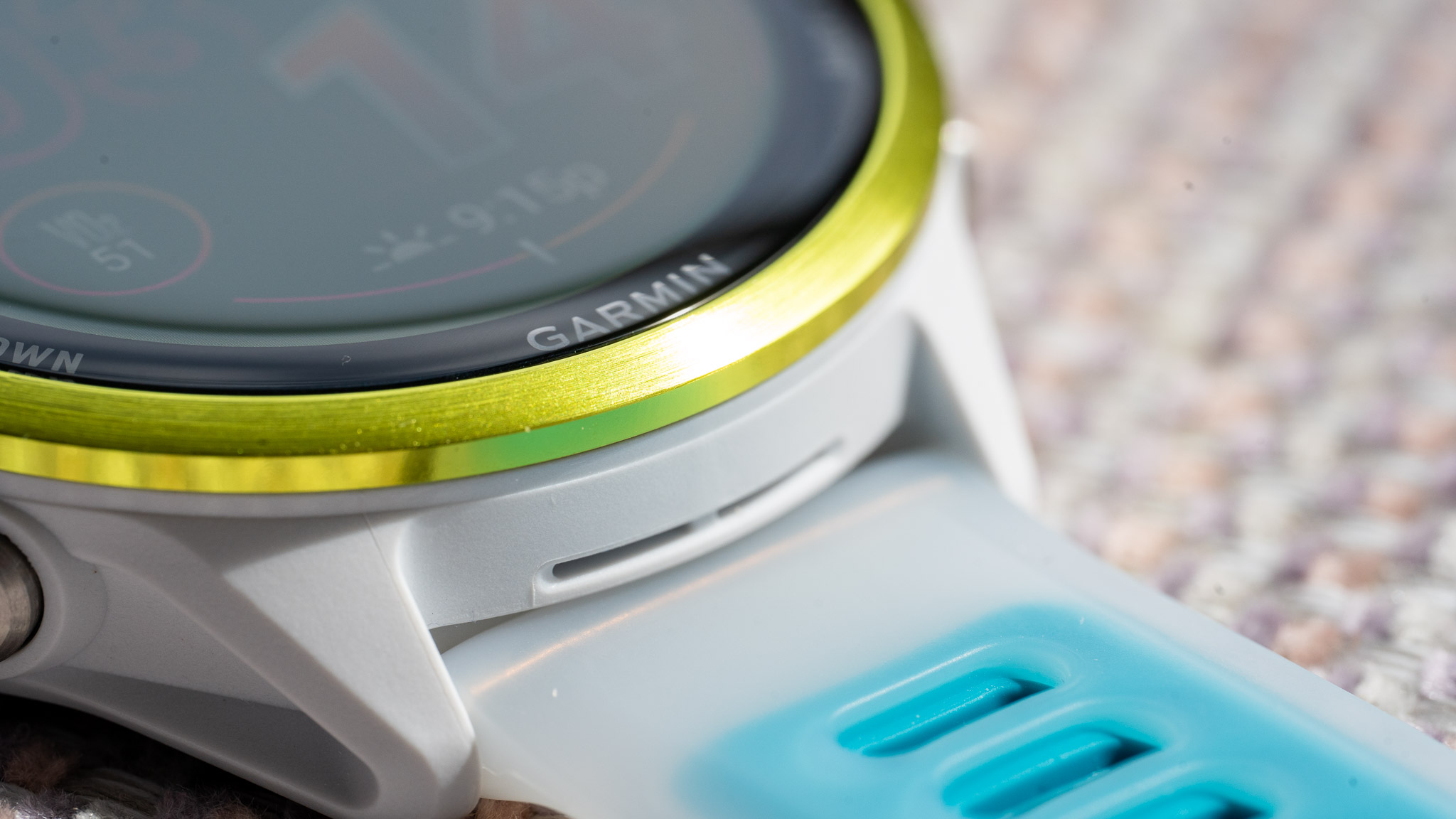
The bezel is now aluminium, allowing Garmin to customise their watches better. Indeed, the Forerunner 570 come in more exciting colours than black and grey, including the tested Amp Yellow Aluminium with Translucent Whitestone/Turquoise Band model. The smaller case has what’s called a Raspberry Aluminium with Translucent Bone/Mango Band colourway.
It’s not getting quite as much publicity, but some of the new straps are somewhat translucent, which made Garmin’s designers very excited when they explained it to us in Kansas. It doesn’t fundamentally change the user experience, but it makes the Forerunner 570 look cooler, that’s for sure.
Of course, you can still get both versions in slate grey, if you’re like Joe Schrick, Executive Vice President, Fitness & Outdoor, who called the more vibrant colourways “got dressed in the dark” colours. Each to their own, I guess! I like my wearables not to be dull, so I’m very much enjoying the new opportunities provided by the new bezel material.

The Forerunner 570 sports the latest Elevate v5 sensor, which is capable of ECG, even though this function isn’t activated on the watch. There is nothing particularly wrong with the Elevate v4 sensor, and there aren’t any new software features unlocked on the watch because of the newer version, but it certainly future-proofs the Forerunner 570.
Garmin added a microphone and a speaker to the watch, and you can now take calls on your wrist. The Forerunner 570 doesn’t have eSIM capability, so you need your phone with you for this trick.
Alarms now also have sound, which scared the life out of me when I first tried this feature. I’m used to Garmin watches only vibrating on my wrist; now, when you set up a new alarm, they will have sound by default, and you have to turn it down to the minimum if you want vibration only.
The five-button layout is the same as always. As far as I’m concerned, the push buttons aren’t leakproof like on the Garmin Fenix 8 (which makes sense).
Features and accuracy

As mentioned above, Garmin focused on upgrading the Forerunner 570’s hardware, not software. There are no new features we haven’t seen on other wearables from the brand, which isn’t necessarily a bad thing, considering how many features there already are on an average Garmin watch.
One thing the Forerunner 570 does is group features into folders on the watch to make it less cumbersome to navigate them. An option already existed on other Garmin watches to do this, but here, it’s the default option. These glance views include Running Performance (lactate threshold, VO2 max, race time predictions) and Health (HRV Status, Body Battery, Sleep Score, Heart Rate, etc.).
You can create your own folders and rearrange the ones that have been set up, too. The Forerunner 570 is a mid-range running watch, and as such, Garmin is trying to position it as a less intimidating performance wearable to those who might not be super experienced with the company’s smartwatches.
One thing I noticed is that features like Do Not Disturb (DND) automatically stay on after a while. Previously, DND was turned back on every time the watch exited Sleep Mode, and I had to turn it back on manually. Now, maybe thanks to machine learning taking note of me turning it off all the time, DND stays on.
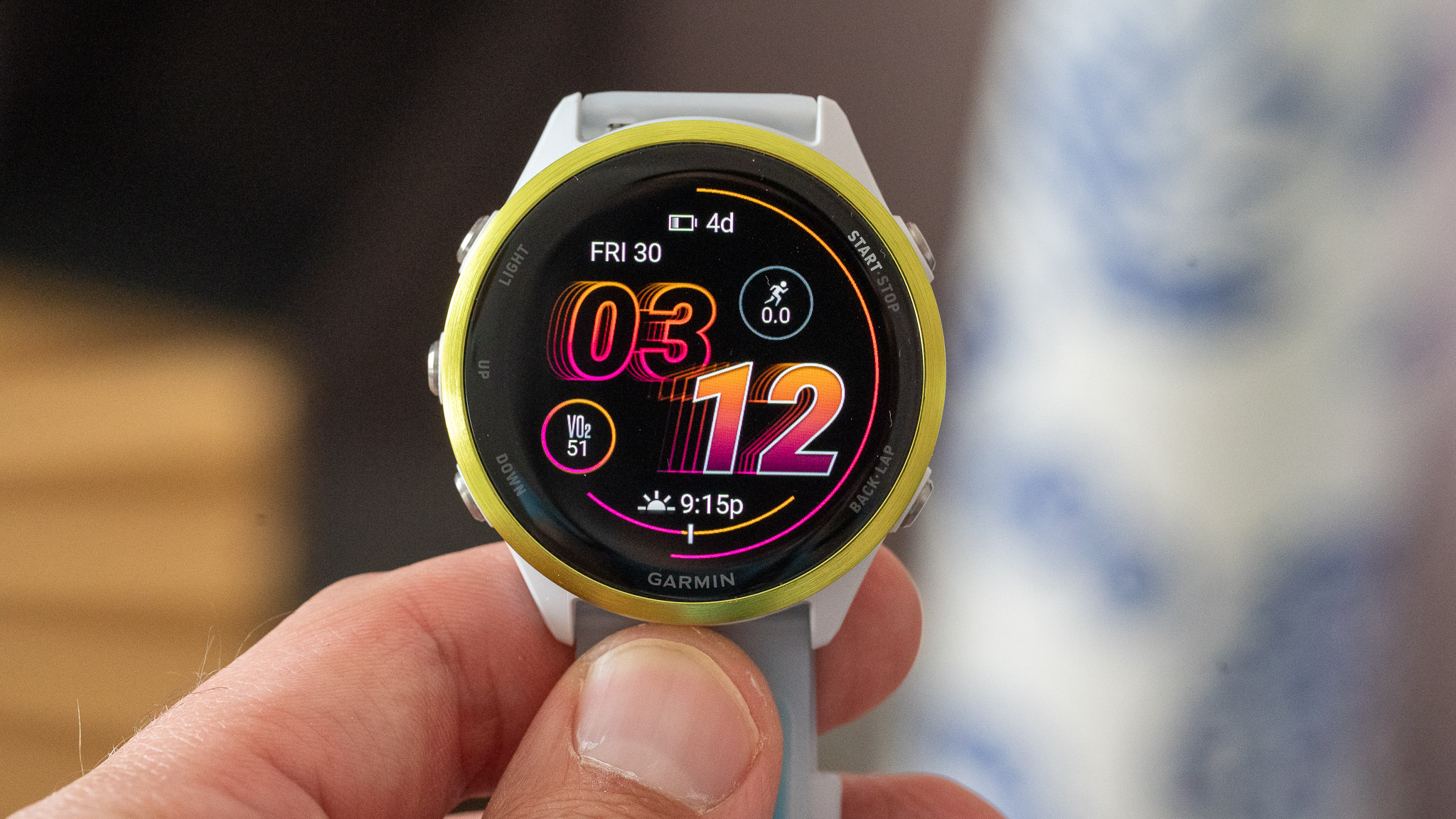
As always, it’s impossible to tell why this happens, as Garmin is notorious for not telling anyone about new features on its watches. Testers such as myself often just stumble upon things, like the fact that colours now have names on the Forerunner 570. Maybe that’s Garmin’s game; you appreciate features more if you think you know about them and no one else does.
One of these surprise new additions, which I’m sure will make its way to other watches, if not already, is the Evening Report. Similar to the Morning Report, it provides a little summary of your workouts and training status, as well as a little sneak peak of the day ahead. It’s charming little feature that certainly delighted me when I first came across it.
You can download and store music from Spotify, Deezer or Amazon Music to your Forerunner 570 and listen to it without any smartphones in sight. The new speaker allows you to listen to music and podcasts without running headphones; however, for the sake of everyone around you, I’d urge everyone not to blast music from their Forerunner 570 in public. At home, on your own, do what you like.
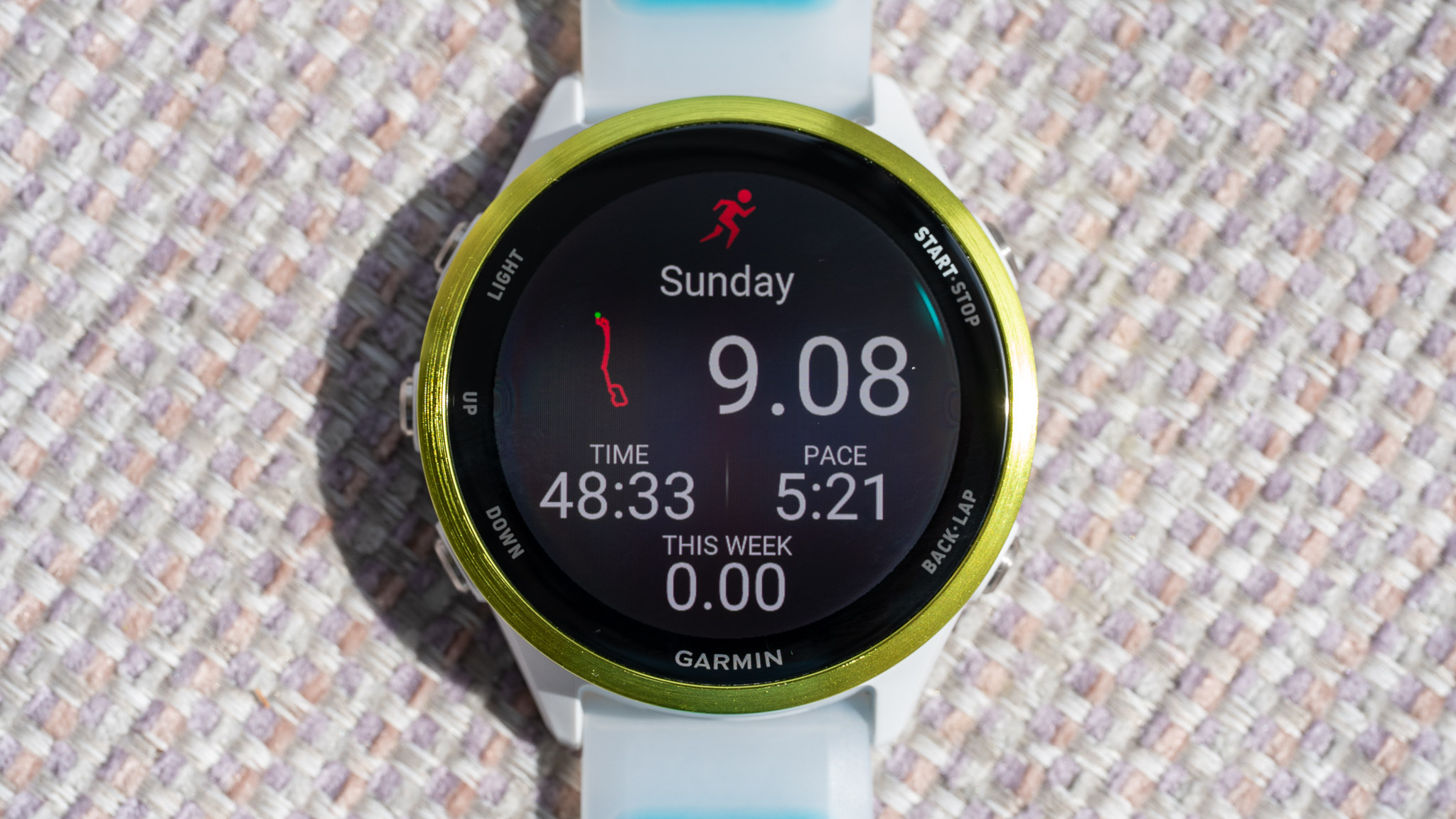
As for accuracy, the Elevate v5 seems to be on point with regards to heart rate tracking both during and after exercise. I had very few issues with the Elevate v4, and the newer sensor works like a charm, too.
The same applies to the positioning system. If there is one thing Garmin does well, it’s GPS tracking, so expect the Forerunner 570 to be very accurate in this department. The watch has the SatIQ mode, which automatically switches between different positioning modes to optimise battery life without sacrificing accuracy.
In summary, I found both heart rate and positioning accuracy good. Other metrics, such as heart rate variability (HRV), VO2 max, etc., are harder to double-check, as most wearables seem to calculate those differently. For example, my Oura Ring 4 puts my HRV at 53ms, the Whoop MG I’m currently testing at 50ms, while the Forerunner 570 says it’s 52ms. They are all in the same ballpark, but not exactly the same.
Battery life and charging
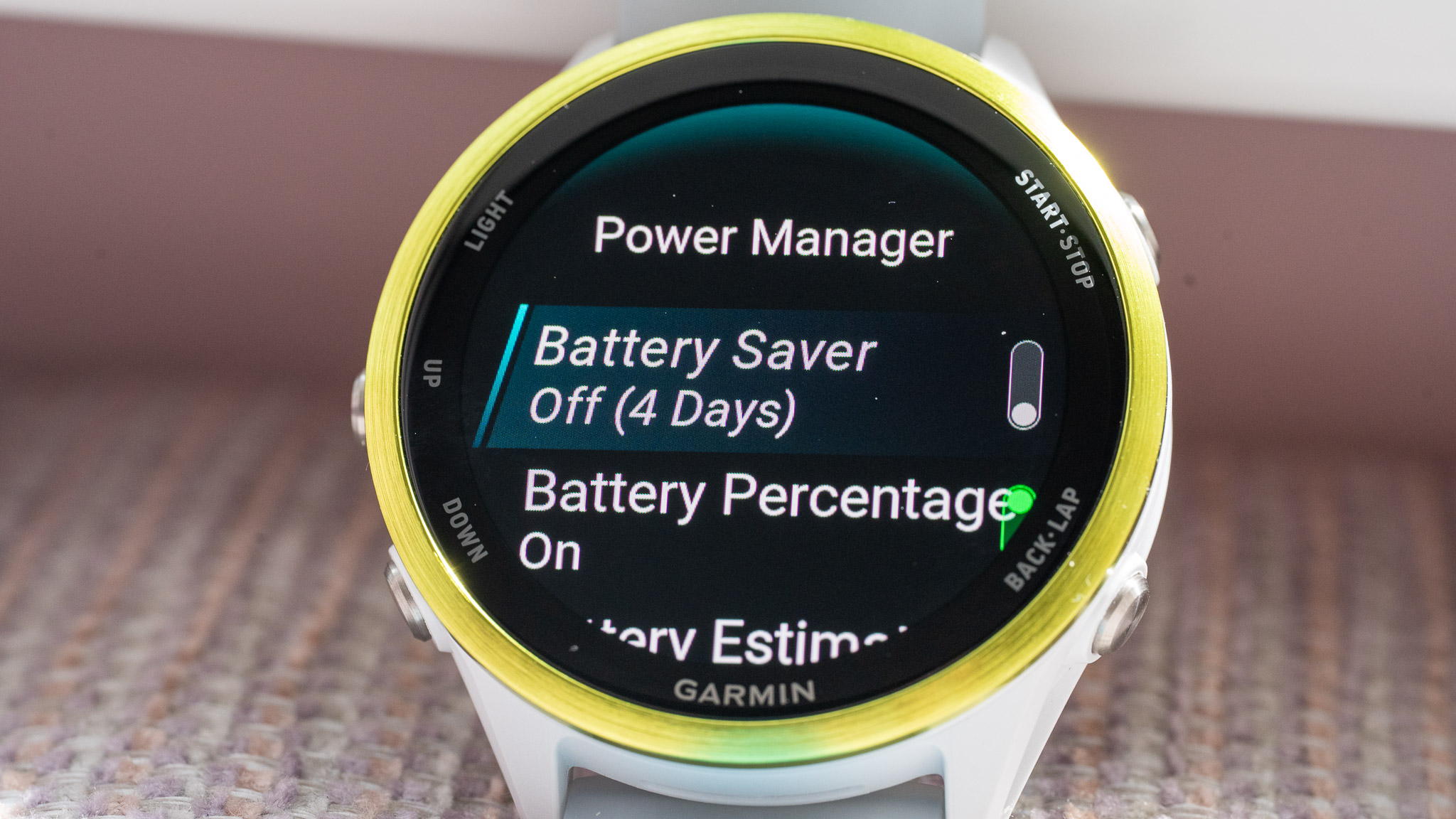
Battery life took a hit due to the new AMOLED panel and the addition of the speaker/microphone combo. Smartwatch battery life is up to 11 days, which is two days down from the Forerunner 265. I charged the Forerunner 570 only once since I started using it (around four days ago), and after nearly two weeks, it still has six days battery life left.
I don’t use the speaker or the microphone, which I assume helps battery life. I’m not the person to interact with the watch all the time, either, but if you like to check notifications, expect the Forerunner 570 to last around nine days. Even less if you use the GPS (which, I hope, is understandable).
GNSS battery life also suffered slightly compared to the Forerunner 265, but not as much. It’s around 16 hours in SatIQ (AutoSelect) GNSS mode, which it’s set by default. If you want more accuracy, All-Systems GNSS mode + Multi-Band mode gives you around 14 hours, which isn’t too bad, really.
The Forerunner 570 can store music offline, which will impact battery life, big time. Battery life in SatIQ (AutoSelect) GNSS mode with music is only around nine hours, or eight if you enable All-Systems GNSS mode + Multi-Band. It’s great that this mid-range watch enables you to leave your smartphone but not your music behind, but you’ll have to pay the price.
Verdict
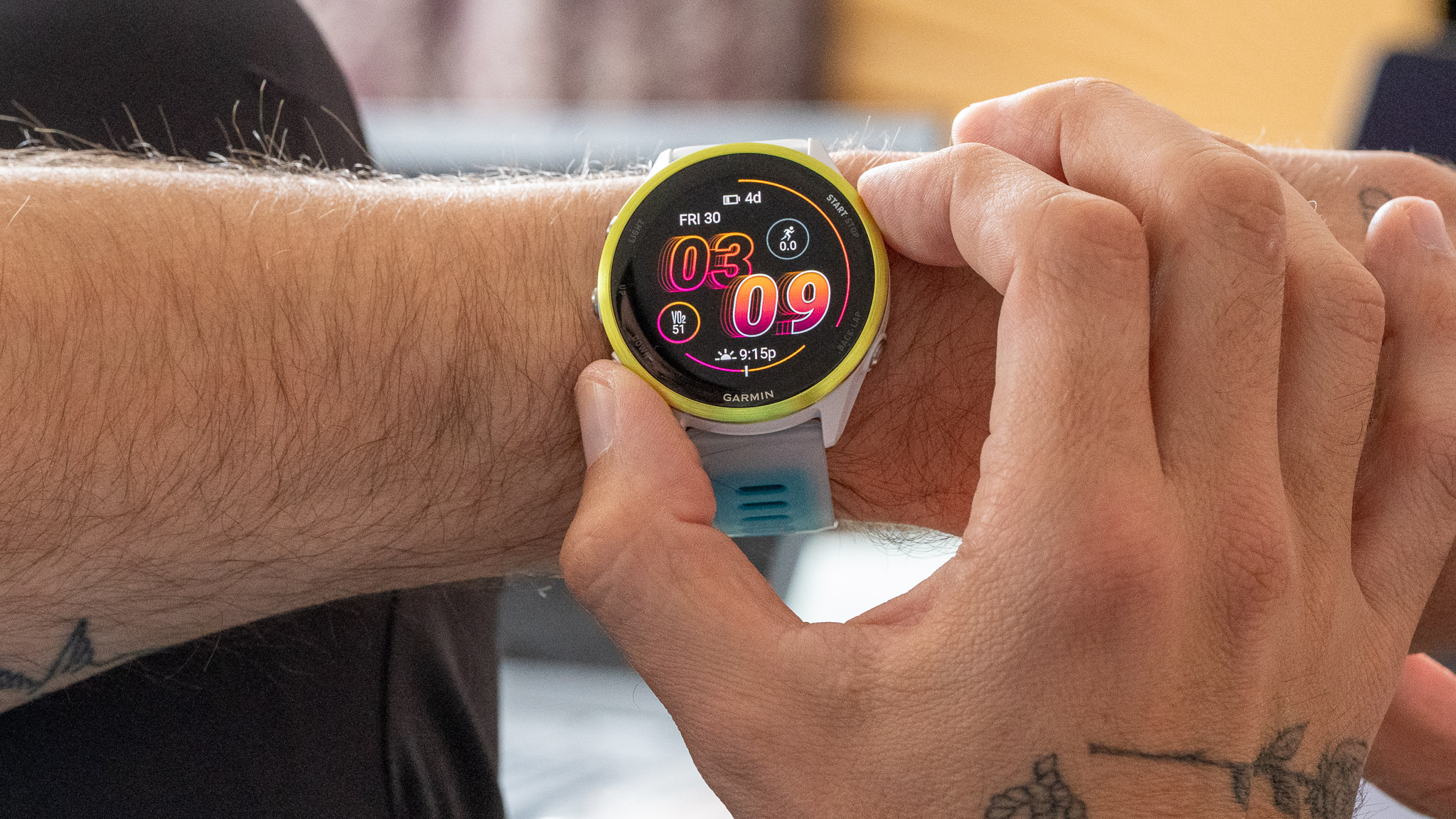
The Garmin Forerunner 570 is a polished update to the 265, but not a revolutionary one. It looks sharper, feels more premium, and adds a few welcome hardware upgrades – most notably, the vibrant AMOLED screen, aluminium bezel, and built-in mic and speaker. The Elevate v5 sensor adds a layer of future-proofing, even if most users won’t notice a huge difference in day-to-day tracking.
But despite these refinements, the Forerunner 570 doesn’t do much that we haven’t already seen on previous Garmin watches. The user experience is familiar, and the software updates are mostly repackaged features already rolled out elsewhere. While Garmin’s new glance folders and subtle tweaks like the Evening Report are nice touches, they’re not enough to justify the jump in price for many runners, especially if they already own a Forerunner 265.
That said, if you’re buying your first proper running watch or upgrading from an older Forerunner (say, the 255 or earlier), the 570 hits a sweet spot of style, performance and usability. It’s a confident, capable mid-range watch with a few luxury extras – just don’t expect it to blow your mind. It’s a refinement, not a reinvention – and that’s okay.

Matt Kollat is a journalist and content creator who works for T3.com and its magazine counterpart as an Active Editor. His areas of expertise include wearables, drones, fitness equipment, nutrition and outdoor gear. He joined T3 in 2019. His byline appears in several publications, including Techradar and Fit&Well, and more. Matt also collaborated with other content creators (e.g. Garage Gym Reviews) and judged many awards, such as the European Specialist Sports Nutrition Alliance's ESSNawards. When he isn't working out, running or cycling, you'll find him roaming the countryside and trying out new podcasting and content creation equipment.
You must confirm your public display name before commenting
Please logout and then login again, you will then be prompted to enter your display name.